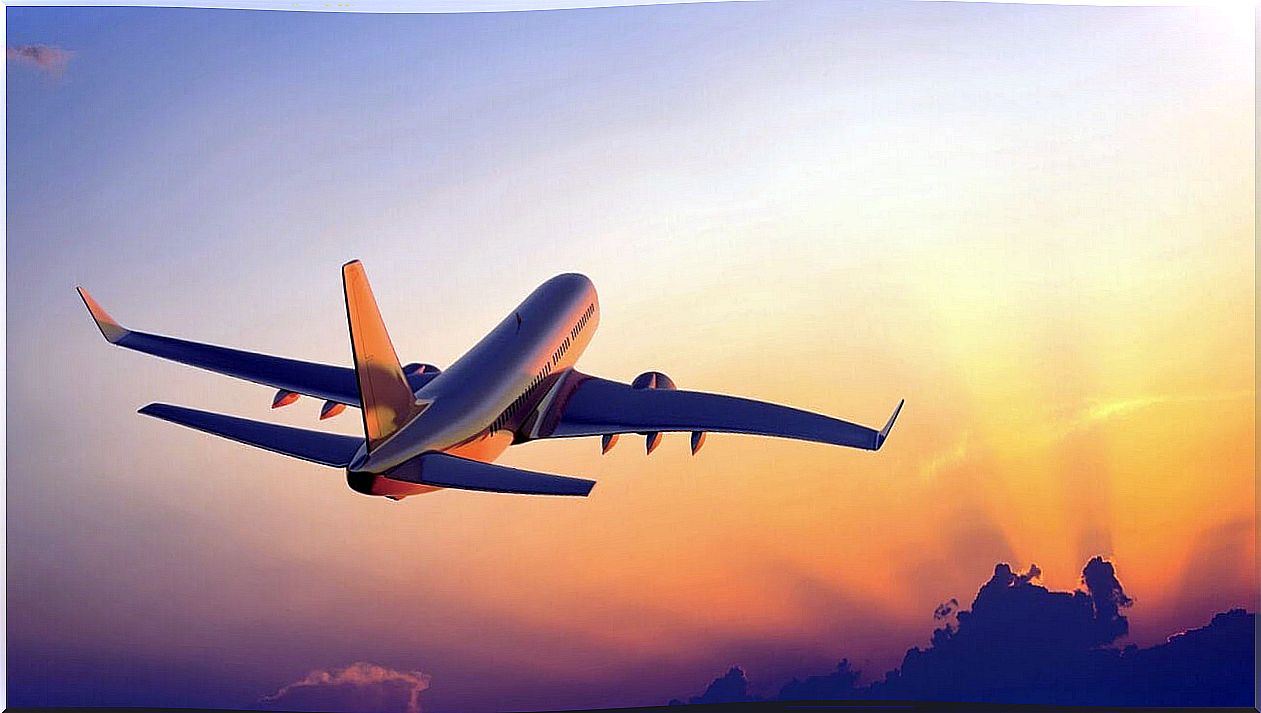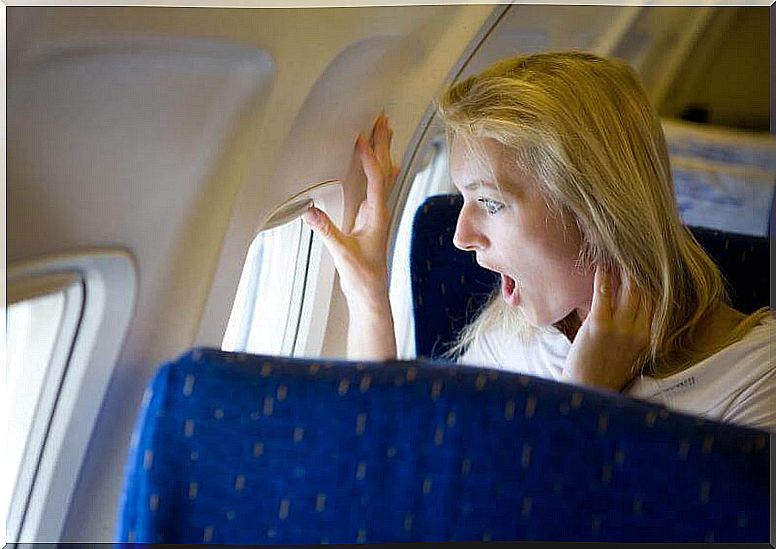Phobia Of Flying: How To Treat It?

Aerophobia is the fear of airplanes. It can manifest in different ways, although in most cases it includes not being able to travel.
In this article we will tell you more about the phobia of flying and how to treat it. Stay with us and check it out.
Flying Phobia: Symptoms and Causes
The fear of traveling by plane is more frequent than we think. One in three passengers has aerophobia.
For this reason, there are many airlines that have created courses (many of them free) so that you can face the fear and overcome the phobia.
This may be d and a phobia itself (flying on a plane) or a manifestation of other , for example, claustrophobia (fear of enclosed spaces) or acrophobia (fear of heights).
Aerophobia receives more attention than any other for the implications it has.
Many people who are afraid of flying do not go on vacation to distant destinations (which cannot be accessed by road or sea), do not visit family members who live in another country or continent, or do not even advance in their professional careers because they do not travel on business.
Although air transport is the safest in the world, the problem for those who are phobic about flying is more that they do not feel safe in relation to what happens during takeoff, flight and landing.
Furthermore, the fact of not having the “feet on the ground” by itself generates an increase in anxiety.
Within aerophobia, we can differentiate the types of fear:
- “The plane will crash with another”
- “I’m going to have a panic attack”
- “I won’t be able to escape”
- “I will have claustrophobia”
- “There will be turbulence and strange noises”
- “They won’t be able to see me if I have a heart attack”
- “I will fly above water or at night”
- “I will never be in control of the situation”
Past trauma can increase the phobia of flying.

For example, if an acquaintance or family member died in an accident, if the first time they traveled there was a lot of turmoil or a forced landing was necessary, if they watched air disaster movies, etc.
The media can also trigger aerophobia. The news usually shows plane crashes and indicates the number of victims as shocking news and not as something isolated.
How to treat the phobia of flying?
People who can’t travel to remote places, who can’t plan a vacation, or who can’t grow up at work because of their phobia of flying should get therapy that allows them to overcome their fear.
Some methods that can be very helpful are:
1. Learn about airplanes

You don’t have to become a pilot or a stewardess to know how aircraft work.
Learn how the timing of takeoff or landing works, what happens during the flight, what safety measures are taken before departing, what to take into account during the trip, how many controls the planes must pass before taking off , etc.
It will also be good to know how the wings and each of the parts of the airplane work.
Airplanes are continuously evaluated and undergo maintenance. Before the pilot takes off everything must be in perfect condition.
In addition, for every hour the plane spends in the air, it must undergo 11 hours of maintenance to make sure everything works correctly.
2. Compare air safety
It is true that when there is a plane crash, most of the occupants die. However, one aircraft is less likely to crash into another than there is a car accident.
Look for statistics to be more relaxed. Although we see several cases of plane crashes, what is certain is that the media show them because they are flashy cases and not because they are usual.
3. Prepare for typical moves

In many cases the phobia of flying is based on ignorance.
What happens when there’s turbulence, what happens while the plane takes off, because they make us tighten our belts?
When something changes our sense of security, we then assume it’s for something bad. However, it doesn’t necessarily have to be that way.
For example, you must be prepared to:
- Your ears clog (from the change in air pressure)
- That feeling of emptiness in my stomach (because it takes a lot of speed to take off)
- Wing movements (to change direction or to be able to fly when there is wind)
4. Don’t worry about turmoil
Even though you might think it’s the worst moment of the trip, it’s actually something very common.
- Especially when taking a long trip, more than 6 hours, at some point the plane will move a little more.
- This happens when the plane passes through an area of low pressure and then through a high pressure one. It’s similar to driving down a rocky path or a rutted path.
- Passengers are asked to fasten their seat belts for safety’s sake, nothing more.
5. Manage anxiety

Keep in mind that no matter how nervous or scared you are, the flight is not up to you. This means that you shouldn’t worry about something that is “out of your reach”.
You can practice relaxation or breathing exercises before landing or even while traveling.
Imagine where you will go, what places you will see, who you will meet when you arrive. Watch movies, read a book, listen to music, play sudoku or chat with the person next to you.
That way you won’t pay as much attention to what’s going on around you.









